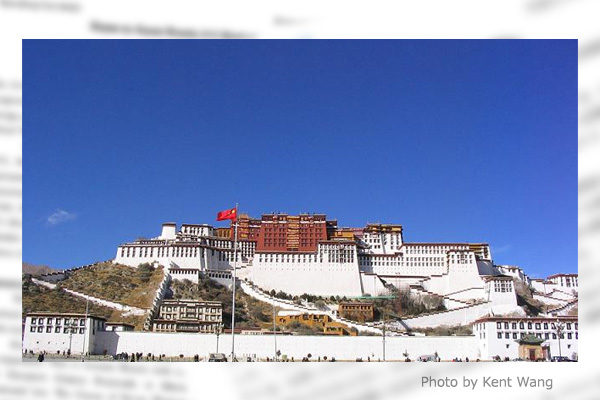Internment camps in East Turkestan (China’s Xinjiang Uygur Autonomous Region) and protests to compulsory Chinese language education in Southern Mongolia (the Inner Mongolia Autonomous Region), which have recently attracted international attention, are linked to the Tibet issue. This is because the three regions have been treated since modern times as part of China and subjected to Chinalization despite their historically built unique cultures.
And now a measure similar to vocational training for Chinalizing Muslims at internment camps in Xinjiang has rapidly diffused in the Tibet Autonomous Region, according to reports. As the Xi Jinping government’s target of basically eradicating poverty and achieving modest living standards by 2020 has become difficult to be accomplished, Beijing has reportedly gathered some 500,000 farmers for military-type vocational, Chinese language and social habits training at facilities controlled by armed police in the Tibet Autonomous Region where poverty rate is relatively high, in a bid to save the face of President Xi and the Chinese Communist Party.
Ethnic minority issues have same roots
Whether the measure is designed to eradicate terrorism, separatism and fundamentalism as seen in Xinjiang is not clear at present. But the measure may represent a hardline policy adopted in light of what the CCP considers twists and turns regarding ethnic minority issues. The CCP has already implemented the so-called ecological migration policy that forced some of Tibetan and Mongolian nomads to move from grassland to urban areas on the pretext of protecting grassland facing desertification. As a result of this policy many nomads lost their living and plunged into apathy and poverty. Meanwhile, what happened in Xinjiang has resulted from the CCP’s anxiety and run to extremes on the assumption that local Turkic people have become a hotbed for militarism, separatism and fundamentalism as they remain poor amid growing disparity under rapid economic development.
And Tibet has been plagued with strong tensions between a Buddhist-dominated society and materialistic modernization since long before the 2008 independence movement. Tibet has seemed peaceful on a decline in media reports about the Tibet issue in recent years because armed police and surveillance systems have been substantially beefed up to keep the region relatively stable since 2008. East Turkestan and Tibet issues have the same root cause.
Forceful Chinalization
Then the CCP, exploiting a decline in international attention to Tibet, and not to repeat past mistakes on Tibet, might have thought that it’s time to intensify vocational or Chinalization education of local farmers and nomads to turn them into urban workers and superficially achieve their breakaway from poverty or their modest living standards.
Has any national unification in history ever been realized through overwhelming coercive power instead of incremental policies adapted to local social, economic and cultural conditions? As facts regarding the large-scale vocational training in Tibet come to light, the international community will further criticize CCP’s trumpet-blowing social stabilization or Chinalization models.
Satoshi Hirano is a professor of law at the University of Tokyo.


